The locals of Xiangshan County in the Zhejiang province of China were taken by great surprise after hearing that a sperm whale was beached in their area.
A fisherman found the colossal creature, which was lying helpless on the beach for about 20 hours.
Rescuers were in a hurry to return the whale to the sea. Many helped out to carefully drag the animal back to its home.
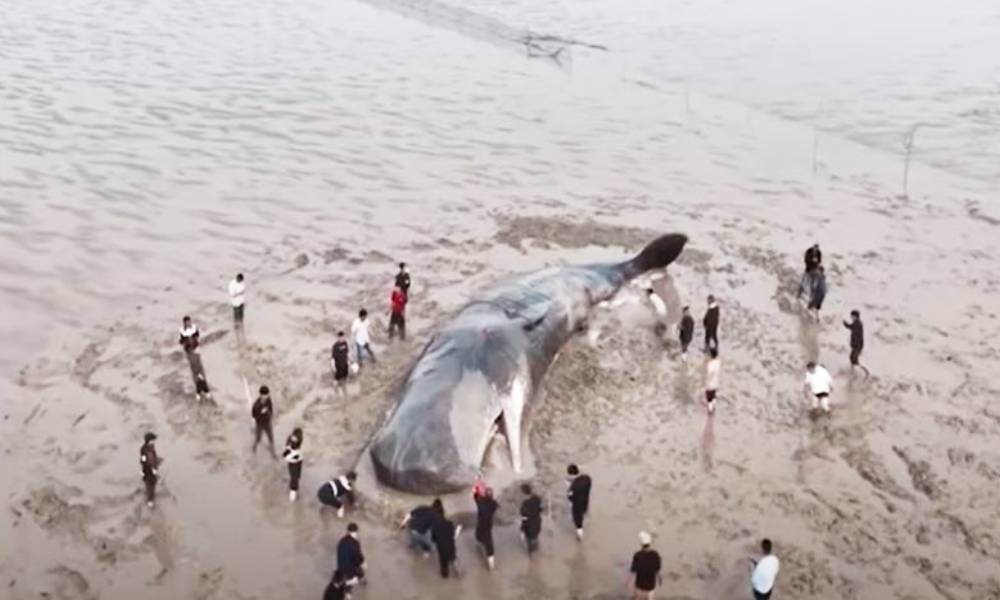
The rescue effort required several vessels, as well, to pull the whale to a safe depth where it could swim on its own.
Stories like this help many of us to restore our faith in humanity amid the many challenges that our planet faces, many of which are humans’ fault.
Why Do Whale Beachings Happen, And How Serious Are These Stranding Events?
Around the world, thousands of dolphins, whales, and other marine creatures are washed up on beaches yearly.
Known as beaching or stranding, the phenomenon usually involves large groups of marine animals, both healthy and injured.

In the United Kingdom, more than 12,000 stranded cetaceans have been documented by the Zoological Society of London’s Cetacean Strandings Investigation Programme (CSIP) since 1990.
In Chile, more than 330 sei whales were found stranded along its southern coast, all of which had died within the same event, according to experts.
In the Mariana Islands, increasing incidence of beached beaked whales has been linked to the use of Mid-Frequency Active Sonar (MFAS) as part of anti-submarine warfare, according to a February 2020 study.
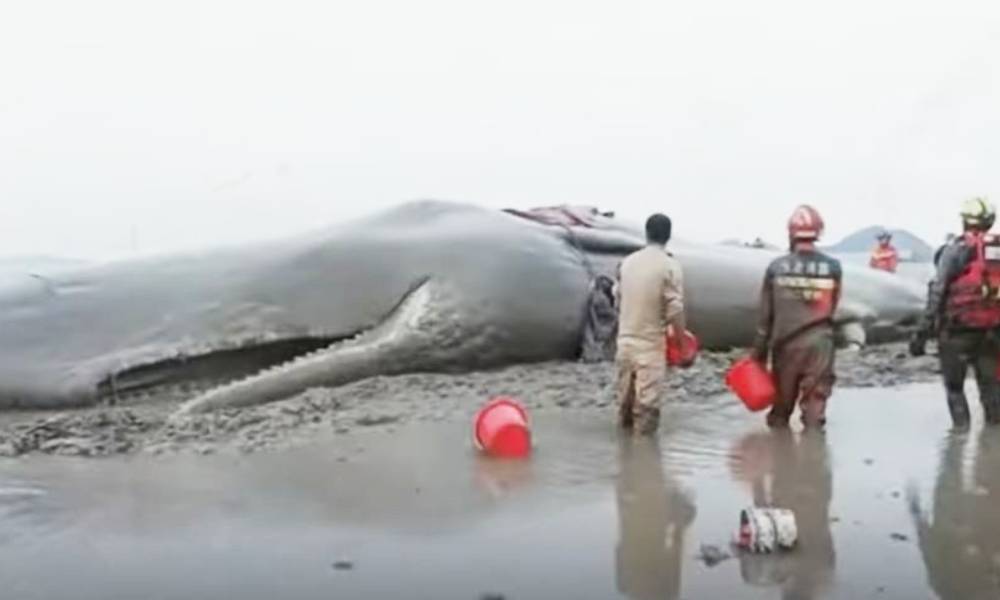
“The high association of beaked whale stranding events with antisubmarine warfare and sonar activity, with the relative lack of beaked whale strandings before 2007, suggest that there may be high risks of sonar-associated beaked whale strandings in the Mariana Archipelago,” the study revealed.
Are humans to blame for all these stranding events? Partly, yes, according to National Geographic. But some causes are natural.
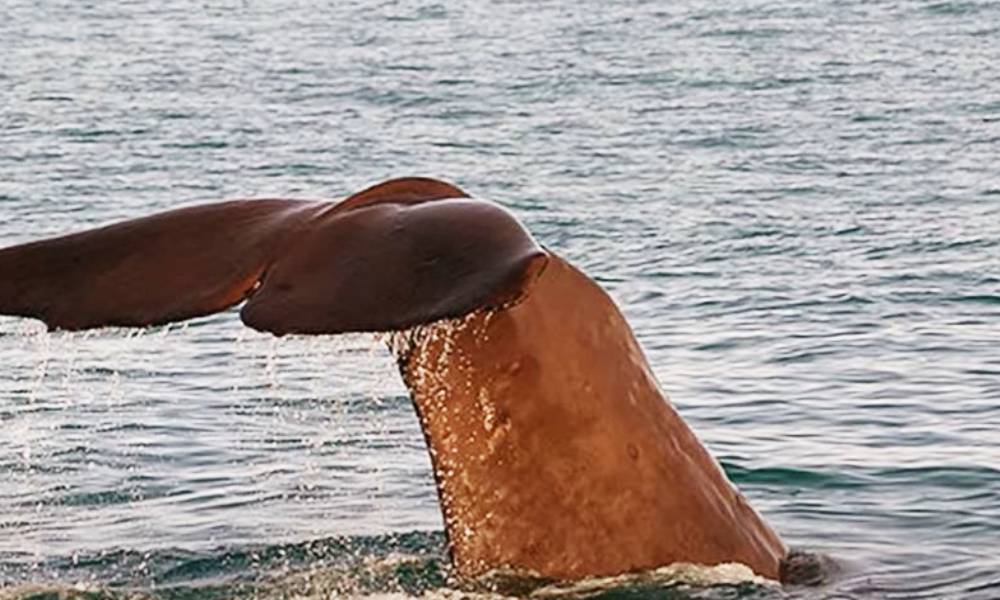
Here are several reasons why beaching happens, be it a solitary beaching or mass stranding:
-
- Topography. Marine animals can get trapped in coastal areas with shallow waters, especially when the tide suddenly recedes.
- Natural causes. Due to injury, sickness, or senility, a marine animal may easily get carried by a current until it gets washed onshore. A lost or disoriented marine animal may also swim into shallow waters.
- Human activities. We have our share of responsibility for causing ocean pollution, ship strikes, and fishing net entanglements, which are major causes of death among cetaceans. Overfishing also deprives these animals of food, leading to starvation.
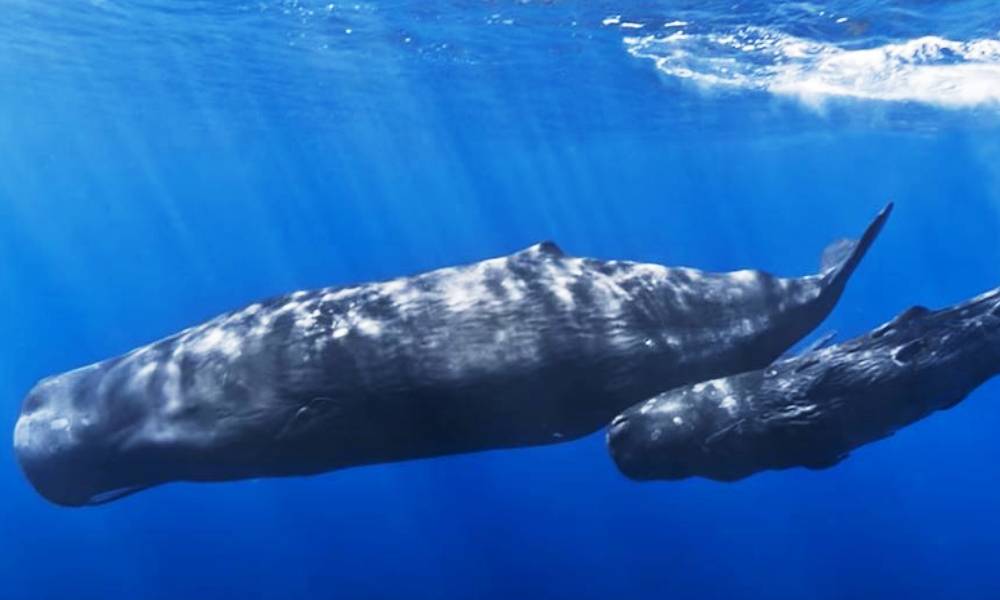
- Noise pollution. The marine world is a vast, tranquil place, but this has changed with human encroachment. The ocean has become noisier with the use of sonar and seismic instruments in ocean surveys, thereby interfering in the communication among these animals as well as in their navigation abilities. Worse, these sounds tend to cause disorientation, fear, and injuries to the ears of whales and other cetaceans.
Are Sperm Whales on the Brink of Extinction?

Sperm whales are now a vulnerable species, with about 300,000 of them left from a population of over a million prior to World War II.
Whale hunting has caused the most adverse impact on sperm whale population, with people butchering these giants of the sea for their oil.
Now, sperm whales are protected under the Endangered Species Act, the Marine Mammal Protection Act, and international whaling agreements.

However, beaching has emerged as another serious problem. And unfortunately, not every effort to save a beached whale or cetacean results in the preservation of its life. Once this animal gets stranded on a beach, its heavy body – which is used to the ocean’s buoyancy – gets squashed by its enormous weight. Also, due to restricted circulation of blood, toxins are produced which poison its system. Likewise, should its blowhole get filled up with water during high tide, the whale will die of drowning.
Time is of real essence when saving a whale.
This sperm whale in the video below appears to have been lucky.
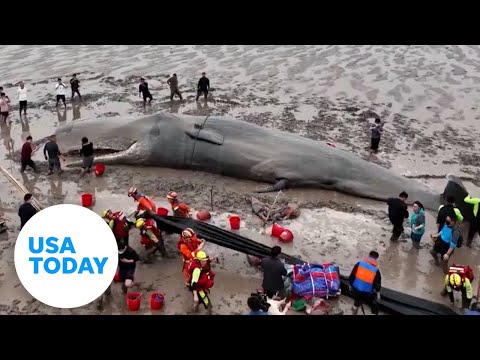
Source: lovewildanimals.com





